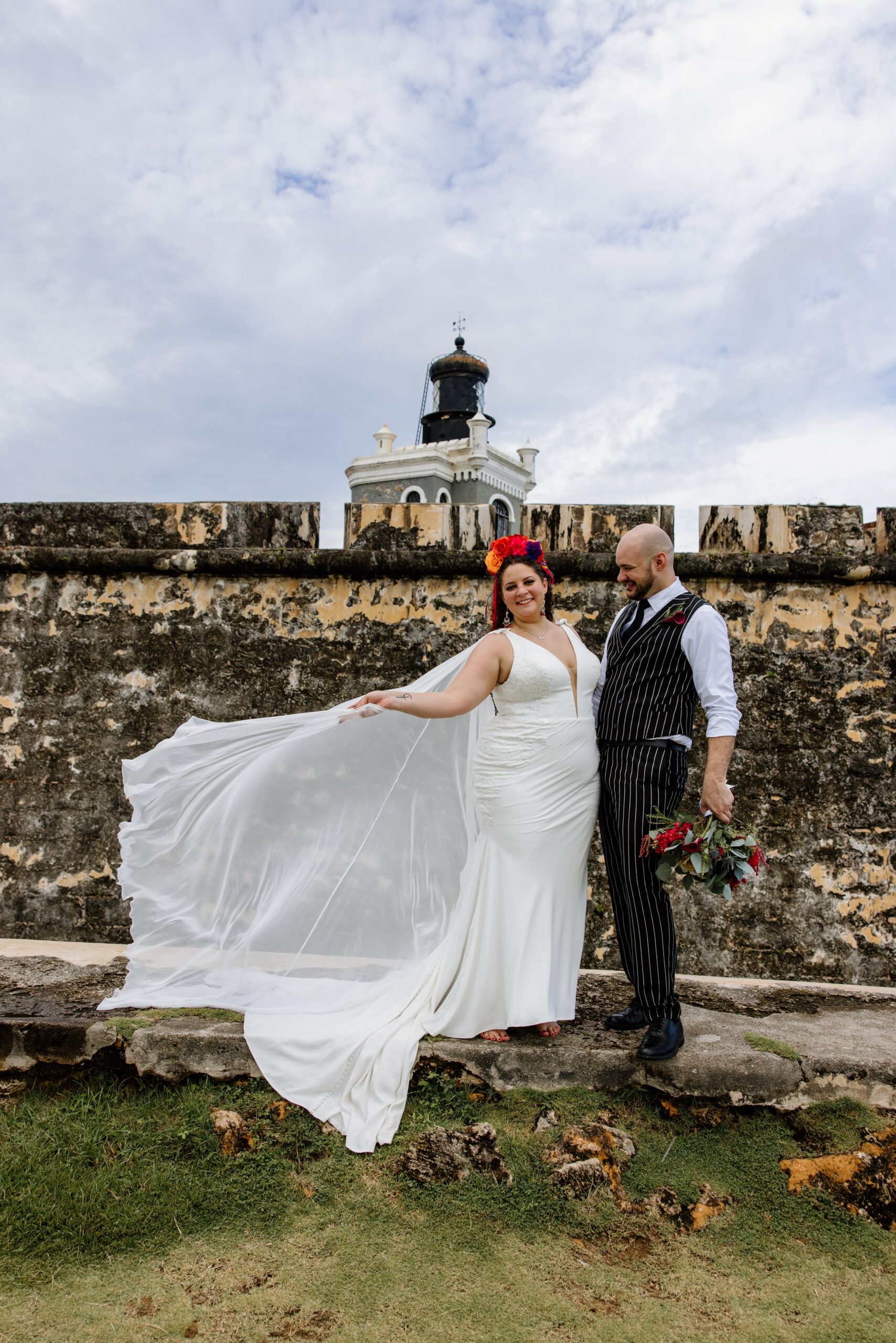

How to Elope in Puerto Rico:The Ultimate Guide
January 7, 2023
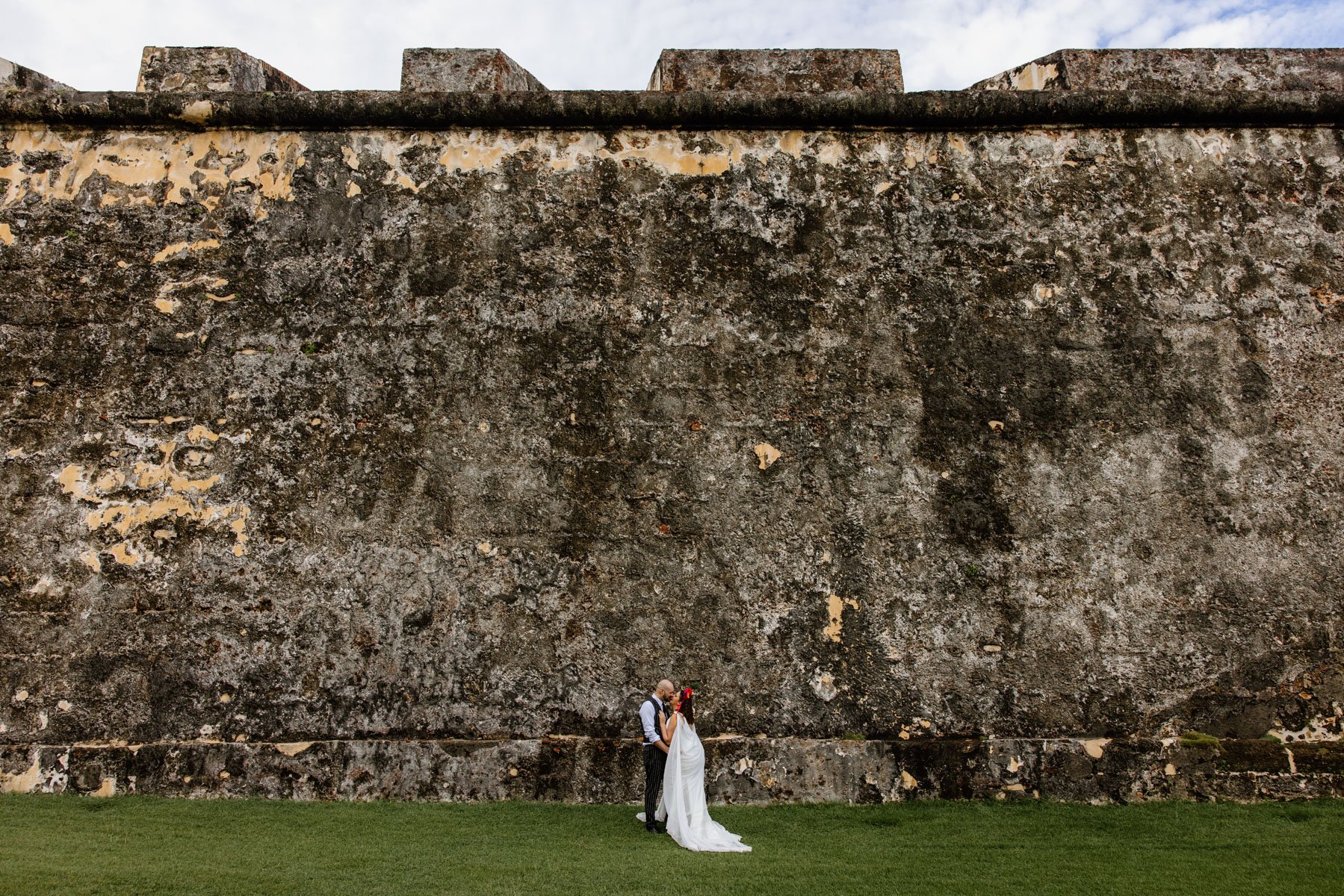
Puerto Rico – Caribbean destination and adventure island galore. J + J knew that they wanted adventure and delicious food without having to whip out their passports. So Puerto Rico was the natural choice for their elopement. I have put together an all inclusive blog about how to elope in Puerto Rico – its a location unlike any other! This elopement was also featured on Wandering Weddings – check it out!
Step 1: Flying into Puerto Rico
There are three international airports on the island of Puerto Rico: San Juan, Aguadilla and Ponce. The vast majority of travelers to the island will enter via the San Juan Airport, but there are flights from the United States mainland on Jetblue and Spirit to Aguadilla in the west and Ponce on the southside of the island. Flying into San Juan the options abound. There are direct flights from nearly every major airport in the continental U.S. on every major American airline. The majority of people fly in from either Florida or New York area airports with the main carriers being Jetblue, American, Spirit and Southwest in that order of passenger volume. There are also direct connections to international destinations like Colombia, Panama, Canada, Spain, as well as a host of other Caribbean islands. For those either afraid to fly or simply prefer a different way to arrive, there is even a ferry from the neighboring Dominican Republic. Although the 13 hour sailing time, which is longer than the flight to Spain, does not make this a common option.

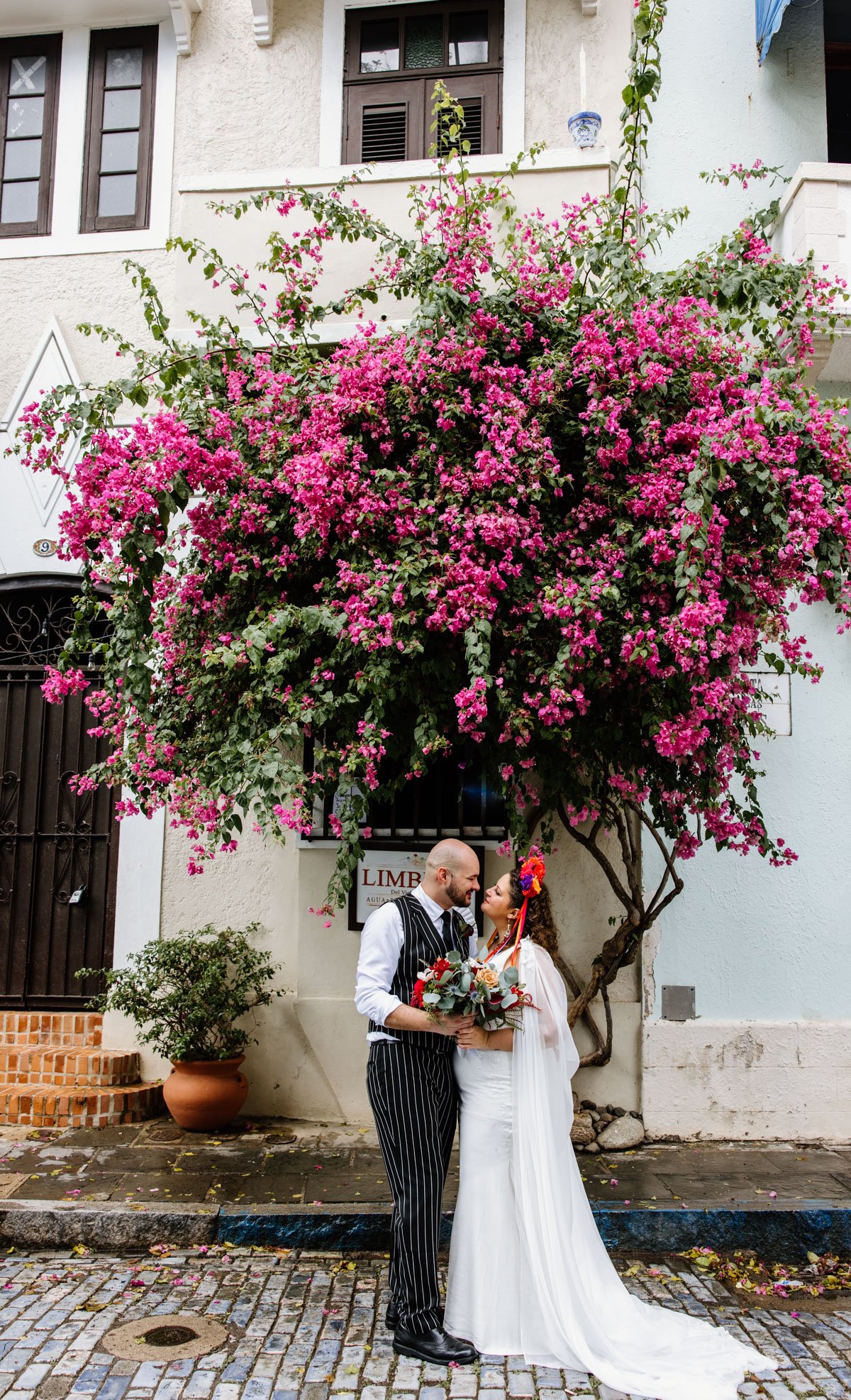
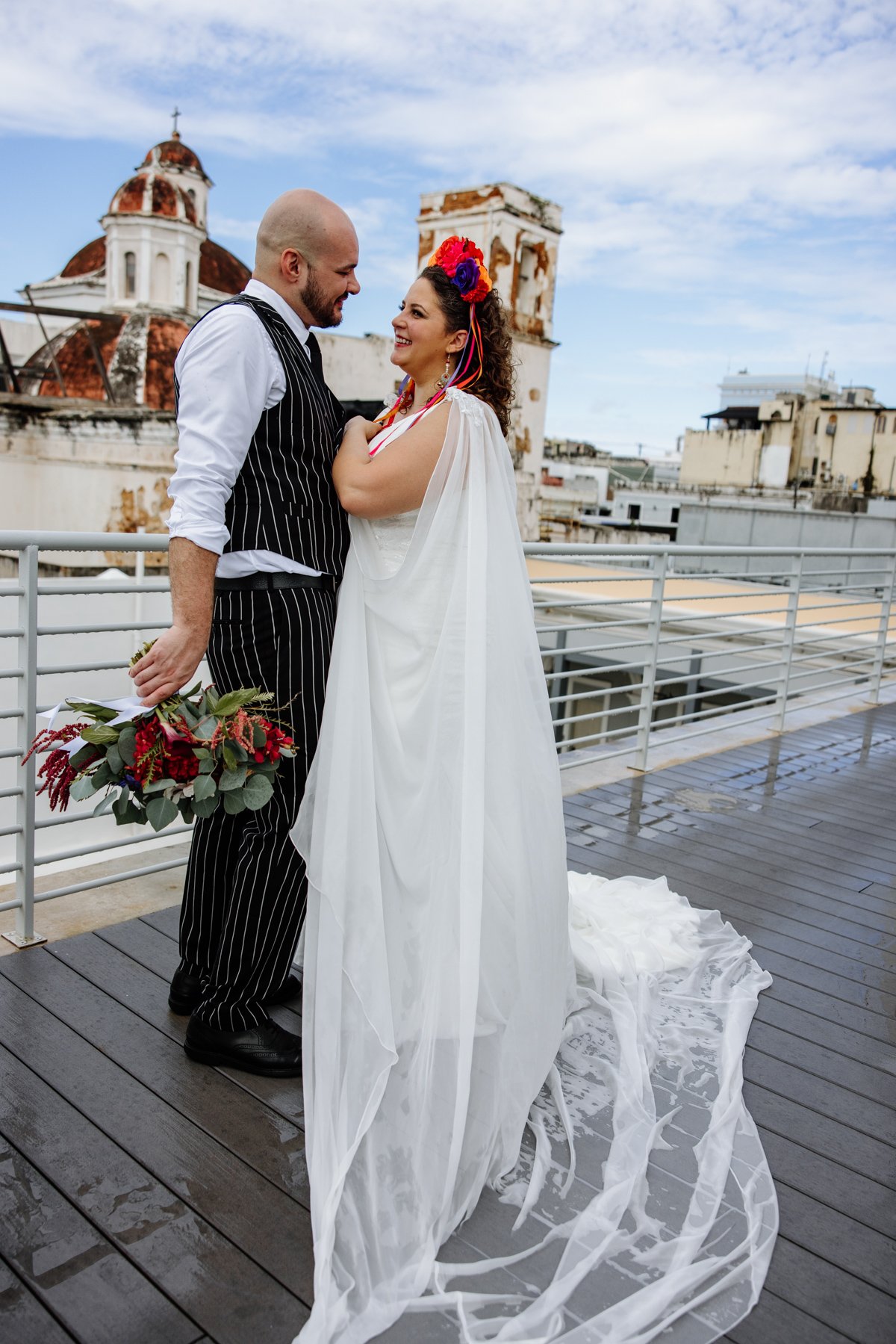
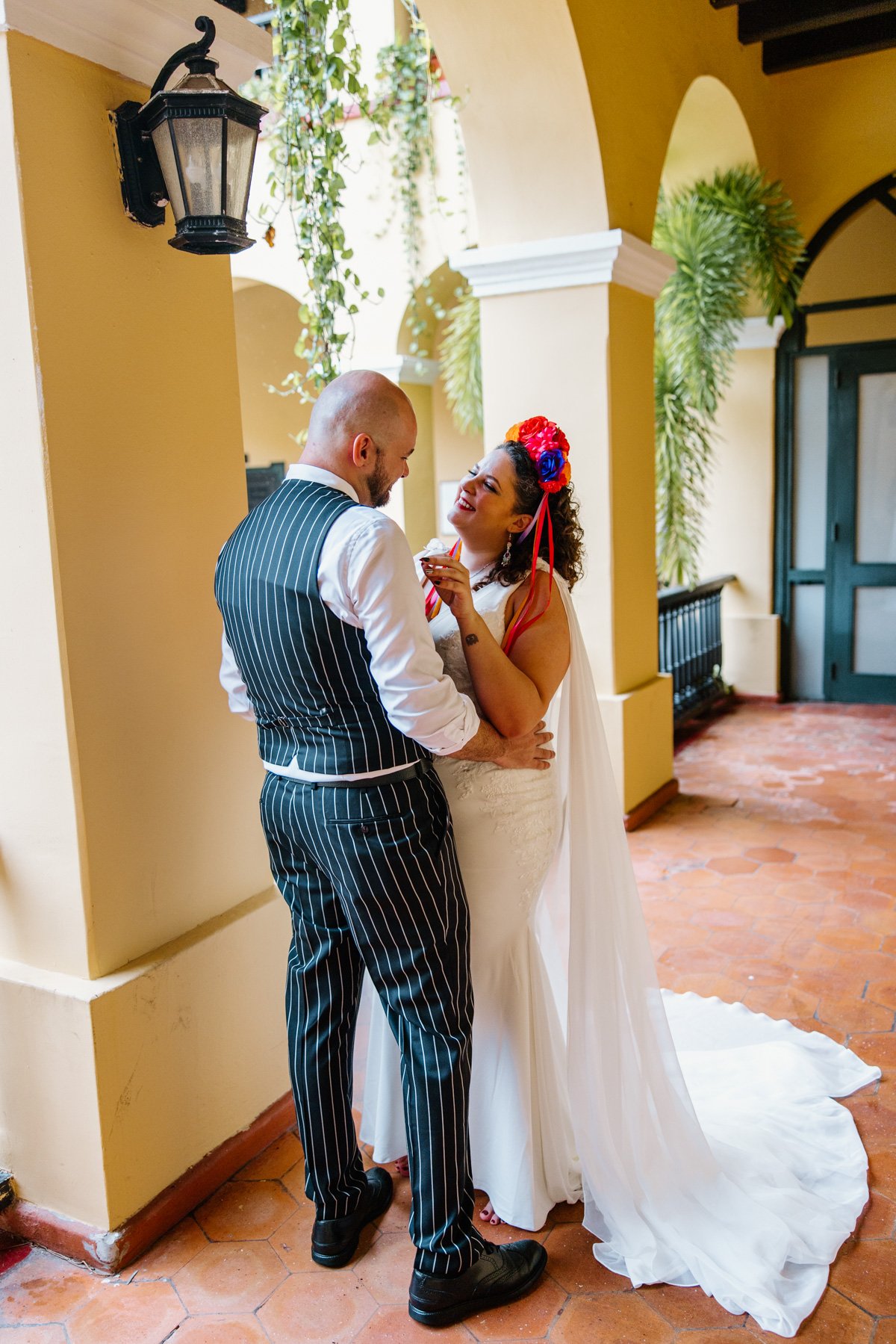
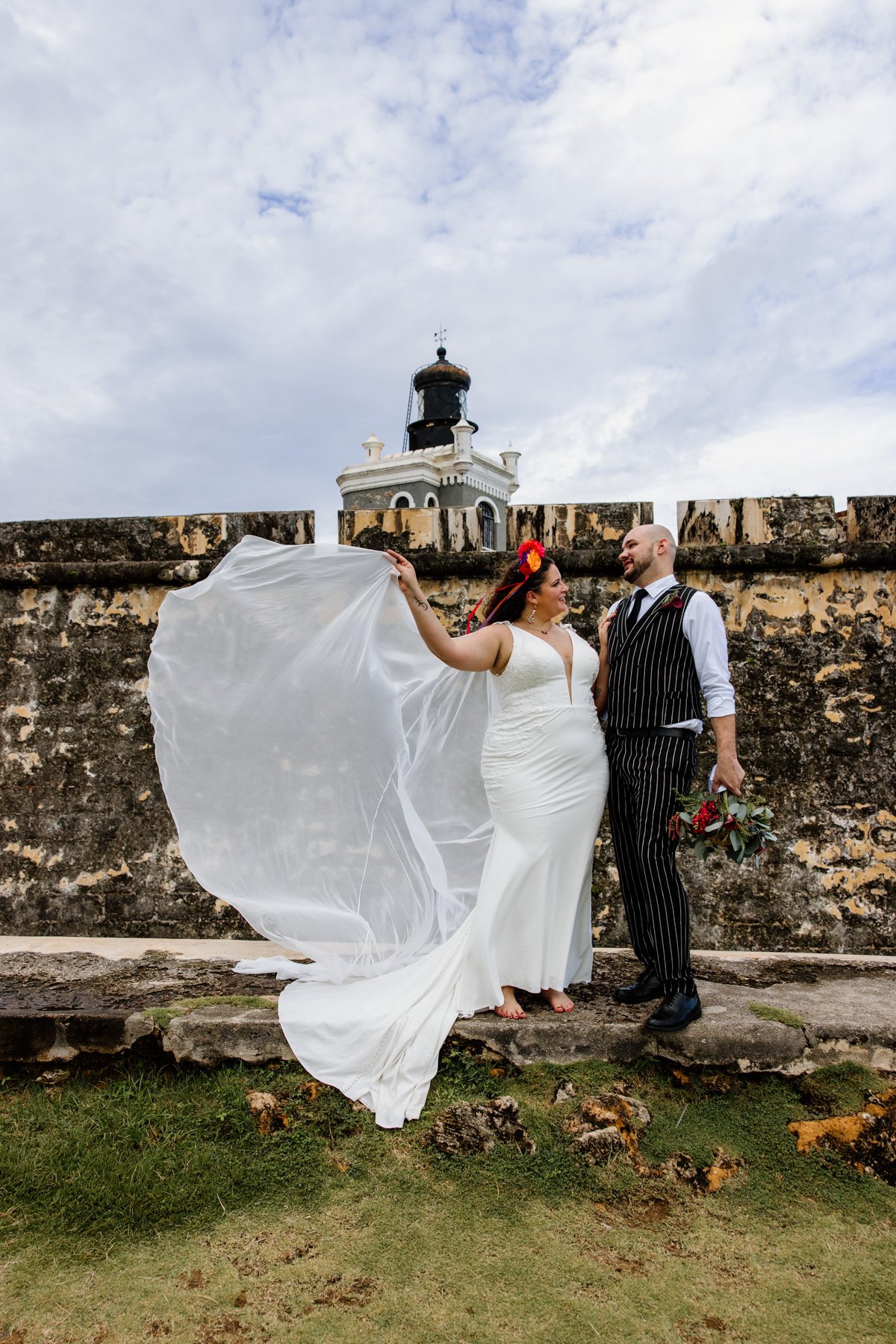
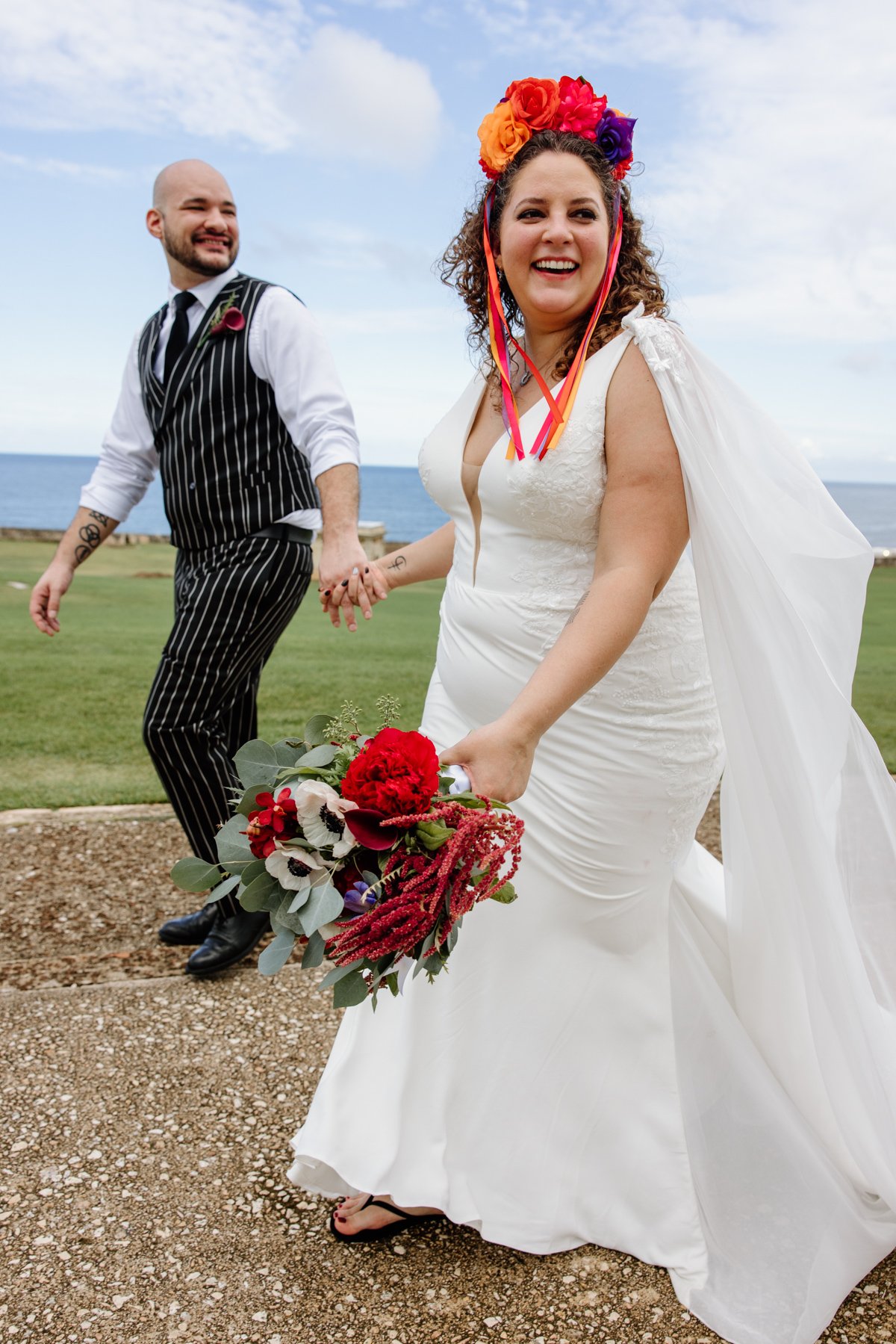
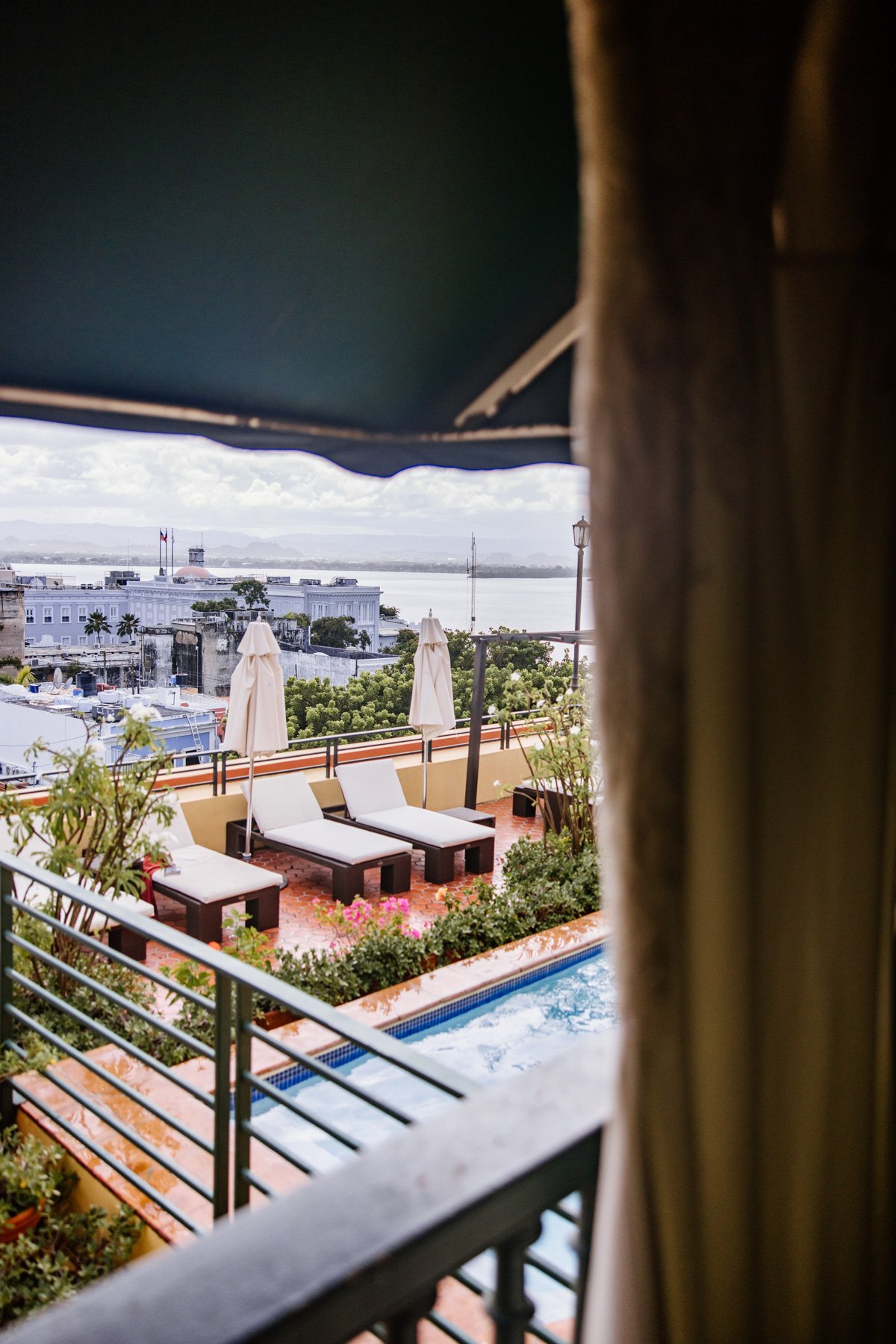
Step 2: How to Get Around Puerto Rico
If your travel plans are only focused on staying in San Juan it is not really necessary to rent a car. Rideshare apps like Uber are an extremely popular and convenient way to get around town. Driving around the old town of San Juan is very slow going with narrow streets and heavy traffic. Parking also becomes a serious issue in the area, although there are a few pay lots, most people end up leaving their car outside the old town and walking in. For this reason it is much easier to simply rely on rideshare apps. Publicos, local vans or buses, are the most popular local mode of transportation. They are however much slower and more crowded than an Uber or a taxi. You also almost certainly need small bills for these. For those getting married outside of San Juan with a larger group of people, there are a host of transportation companies that can provide limos, vans and other transportation options.
Two of the more popular honeymoon destinations in Puerto Rico, Culebra and Vieques require a bit more thought into getting there. Both islands are accessible by small commuter aircraft. Three major companies fly these routes: Vieques Airlink, Cape Air and Air Flamenco. Prices vary but expect to pay between $120 to $200 per person each way. Flight times are around 35- to 40 minutes to each island. There is also a ferry service to both islands. The ferry takes usually around 40 minutes but can be more depending on ocean conditions. Ferry tickets for foot passengers are extremely cheap, about $2. There is a ferry between Vieuqes and Culebra directly, but since it only runs once a month, unfortunately visiting both islands requires a return back to the main island of Puerto Rico and then another ferry back out to the other island. However since there are 8 to 9 sailings between the islands every day this is easily doable. The major problem with taking the ferry versus flying is simply that the ferry terminal is located in Ceiba, about 40 miles or 65 kms east of San Juan Airport.
You can take a car to Vieques or Culebra however this is usually way more hassle than it is worth. Not every ferry takes cars and the cargo ferries are often booked out in advance. Cargo ferries also do not follow a strict schedule like passenger ferries do, so this can often mean a lot of waiting at the ferry terminal in Ceiba. The other problem is that just about every single rent a car company in San Juan prohibits their cars from leaving the main island of Puerto Rico. Needless to say it does not make too much sense to park your car in Ceiba and pay the rental company a daily rate while you do not use the car on either island. One of the better options is a fixed price taxi service from San Juan, which costs $75 each way for up to four people. Once on either island it is possible to rent a jeep or bicycle, however your options are very limited.
Getting around the rest of Puerto Rico is quite easy. Every major rental company has offices at the San Juan airport. My preferred way to shop rental cars is to use an aggregate site like Kayak or RentalCars.com to compare rates and then book directly with the company. Booking directly with the company cuts out most complications with any cancellation or modification of the reservation. Unless you are offered a spectacular deal, prepaying or using a third party website offers almost no benefits to paying at pickup and booking directly with Avis, Hertz or whoever.
Driving around Puerto Rico is relatively hassle free. With the exception of Old Town San Juan there is not usually a major problem with traffic or parking. Driving etiquette in Puerto Rico is very similar to the mainland United States. It is much more calm than many other parts of the Caribbean, especially the neighboring Dominican Republic. If you feel comfortable driving around Florida, you should feel comfortable driving around Puerto Rico. Like anywhere however, the more rural the destination, the worse the roads can get. Major highways are an ease to drive on, but there are a few toll roads along the way. Most rental car companies will have the AutoExpreso tag in their car allowing you to use the drive thru express lanes. However realize that you are probably going to pay a fee to use the tag each day plus the tolls. Tolls are relatively inexpensive, less than $5 from San Juan to Aguadilla. There are free roads, but they are much slower with more truck traffic and multiple stop lights. When on vacation time is money and since the toll roads do not require a lot of money to save a fair bit of time, they are well worth it.
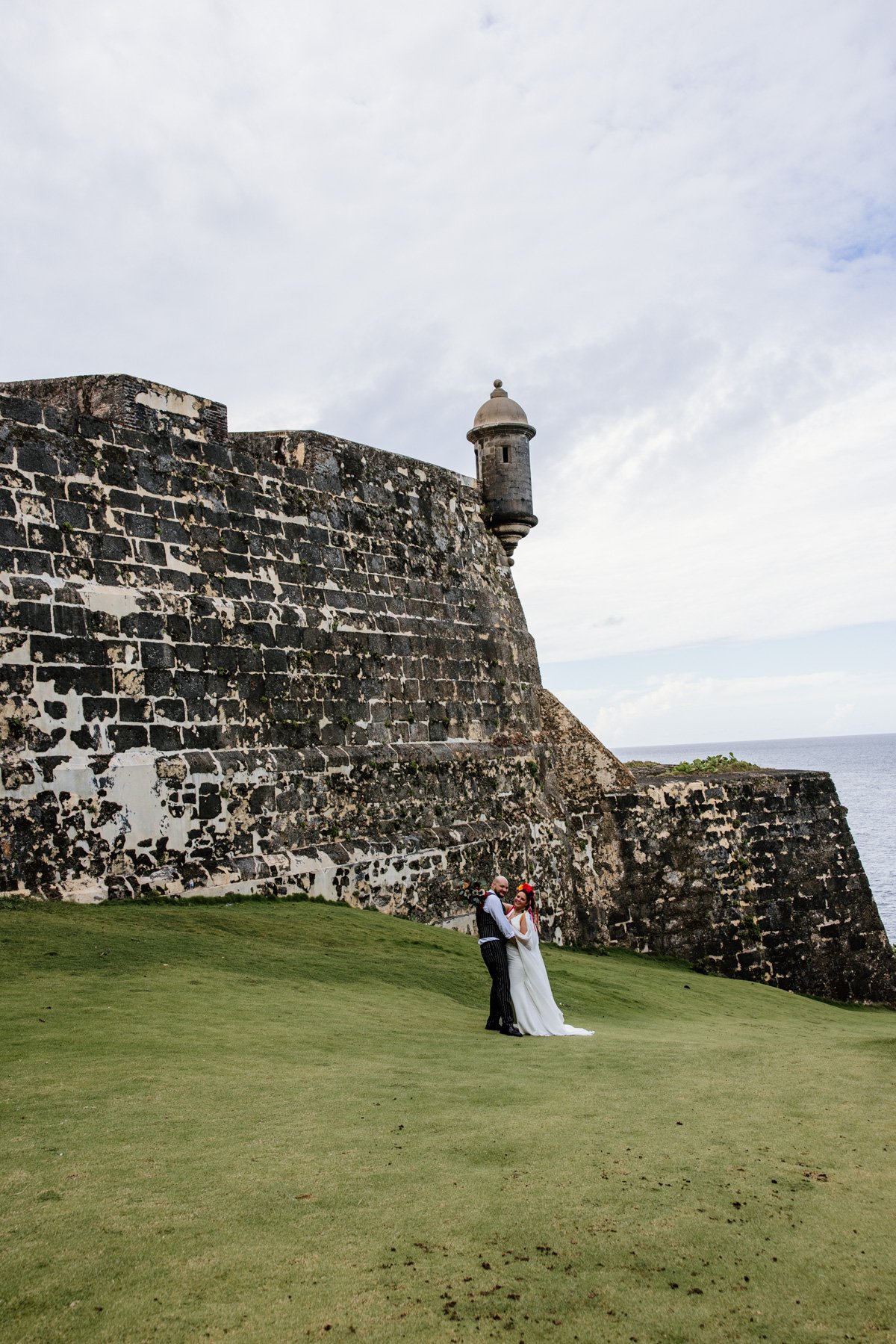
Step 3: When to Visit Puerto Rico for your Elopement
The best time to visit Puerto Rico is, like many tropical locations, fairly simple. There is a rainy season and a dry season, and unless you like mid afternoon monsoons it is easy to know which to pick. Puerto Rico’s temperature almost never changes. Its average high temps vary only 5 degrees fahrenheit (3 celsius) over the course of the year, hovering in the 80s (or around 30 celsius) all year round. It is also always going to be humid. The dry season in Puerto Rico runs roughly from the end of December to the end of April, where there is only about a 20% chance of rain on a given day. Starting in May that number starts to climb to the rainiest month of September when there’s just about a 50% chance of rain on any given day. September and August can see anywhere from 5 to 7 inches of rain on average that month, which compared to January’s 1.3 is a big difference.
Geography also matters here. The north of the island, where San Juan is located, is dryer than the south. In some places this can mean a difference of almost six times more rainfall in the south than the north. For those who have spent most of their lives in temperate climates, rain in the tropics is a bit different.
While those from further north in the globe are used to entire days being rained out with a slow drizzly rain, the tropics are completely different. Usually rain showers occur in the afternoon and only for a short period of time, anywhere from 30 minutes to 3 hours. Some of these rain storms can be short bursts and others can be massive downpours. It rains almost every day in Puerto Rico, but fortunately it does not rain all day. It bears remembering also that unlike in the north, rainy days are not cold days. It will still be 80 plus degrees. So when planning your elopement in Puerto Rico, just be prepared for some afternoon showers.
Because the rain is usually confined to short bursts in the afternoon, the rainy season does not necessarily have to keep you away. In fact if you are looking to lie out on one of Puerto Rico’s stunning white sand beaches and accompany that with a dip in the ocean, May through July can be a good time to do that. During this time the average water temperature is about 85 degrees, versus 75 in “winter.” Either time period is easily swimmable so there is not necessarily an offseason for the beaches.
The one off season is really from about August to October.
One of the reasons that August and September are the island’s rainiest months is because this is hurricane season. Or at least this is the prime time for hurricanes to hit the island. They can hit anywhere from June 1 to December 1. Some of these storms can be quite severe but there’s no guarantee that they will hit while you are there. This is the time to visit for cheaper accommodation options, rental cars and empty beaches, if that is your priority. Either way you go, you can’t go wrong eloping in Puerto Rico!
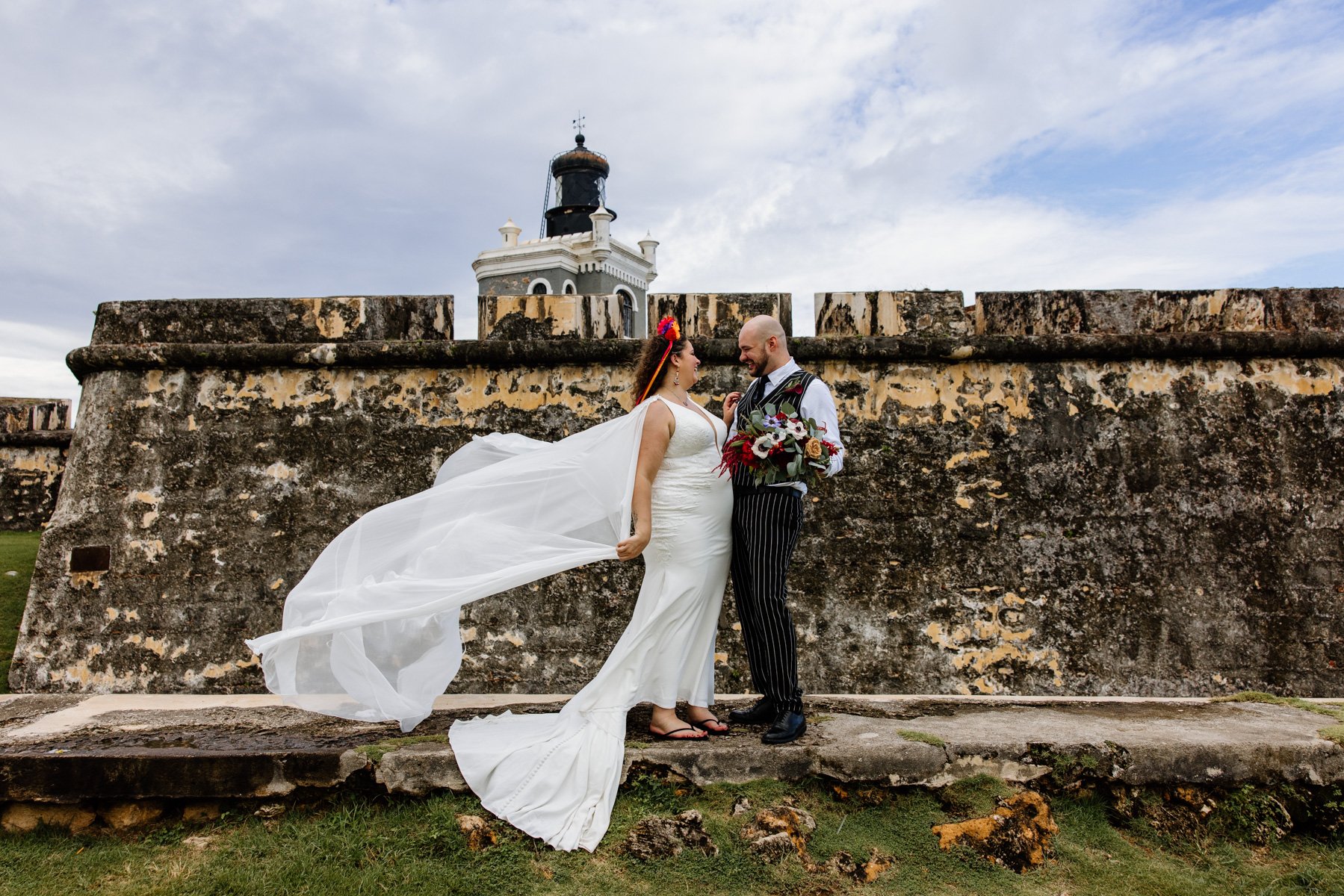
Step 4: What to See & Do in Old San Juan
The vast majority of visitors to Puerto Rico arrive through San Juan and the city’s main attraction is the 500 year old colonial section known as Old San Juan. Its cobblestone streets and colonial buildings are guarded by not one but two massive fortifications. Far and away the most visited, and most striking, monument in San Juan is El Morro. The massive fort is now a national historic site, run by the park service so bring your national parks pass if you have one, otherwise it is $10 a person. With sweeping views over old San Juan and a prominent position protecting the entrance to its harbor, the fortifications took over 200 years to build, finishing only in 1790, only two years after the U.S. ratified its constitution. Yeah, it is that old. The fort is now a UNESCO world heritage site and on weekends the massive field in front of it is filled with locals flying kites in the often strong sea breeze. While taking photos outside of El Morro is an option, you can also apply to get married/take photos inside the fort. This, like any National Park photography permit, simply requires time and a small fee.
Visit El Morro National Park
Once you have purchased your ticket for El Morro, you may as well visit its smaller sibling down the road as it is included in the ticket. While El Morro guard’s the city’s harbor, Castillo San Cristobal was built from 1634 to 1765 with the purpose of guarding the land route into San Juan. From El Morro the Castillo is a lovely walk about a mile along the breezy sea side of Old San Juan.
Walk the Charming City Streets
Much of the charm of Old San Juan comes from simply wandering around the city without a plan. From Plaza Colon in the east to the gates of El Morro it is possible to walk across the entire Old Town in about 20 minutes, though of course wanderings, detours, photos and piña colada breaks will slow that down. For those who prefer a more regimented walking tour, some of the highlights include the following. Capilla del Santo Cristo on the south side of town is a small chapel that was built on top of the city walls. Along the path from El Morro to Castillo San Cristobal is the Santa Maria de Pazzis cemetery. This seaside cemetery is full of elegant and dramatic headstones with a beautiful view of the ocean. Towards the western end of town is the oldest building in San Juan which is now a museum. It was built as a house for the Conquistador Juan Ponce de Leon in 1520, although he never occupied it. A few hundred yards to the south of Casa Blanca is the Puerta de San Juan. One of the more famous entrances into the walled city, it was here that for centuries Spanish governors and dignitaries entered the town after disembarking from ships in the harbor. Appropriately next door is La Fortaleza, the Puerto Rican governor’s mansion. You cannot visit the governor’s house independently but there are two scheduled 30 minute tours per weekday for those interested. Make sure to bring government issued identification if you want to go inside. To find one of the oldest churches in the United States, Iglesia de San Jose, built in 1532, is just at the northwest end of Old Town.
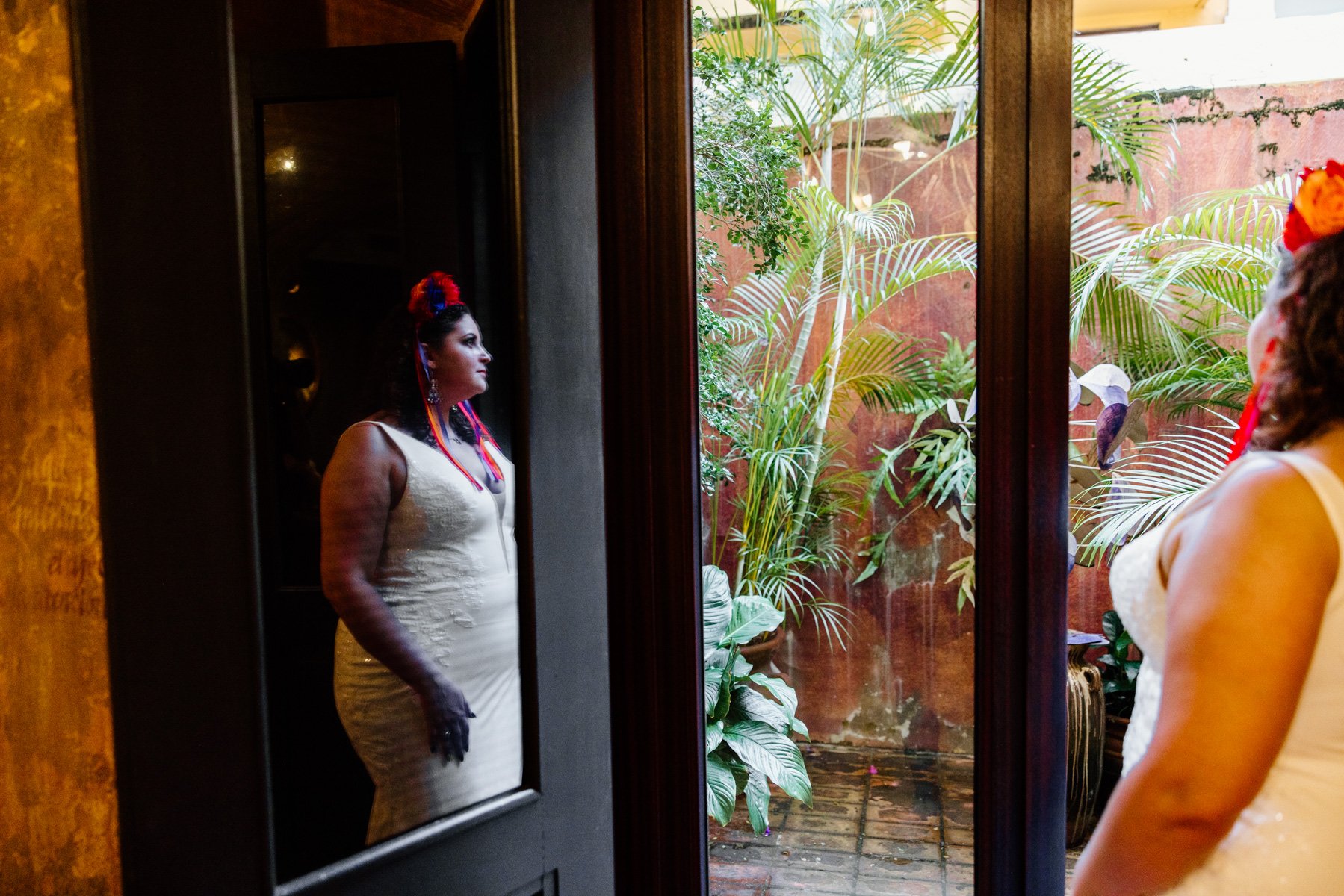
Step 5: Beaches in San Juan
El Escambron
One of the most popular beaches in San Juan is located about a 30 minute walk east of Old Town. Escambron is a blue flag beach, which means that despite its urban location it meets the highest standards for safety and cleanliness. The beach is sheltered from the pounding waves of the Atlantic by a coral reef, which makes it a lovely area to snorkel. The area is surrounded by bars and restaurants, and there is a public parking lot if you are coming by car. There are a string of other beaches running along the coast east of Old Town. Condado and Isla Verde are two popular options. These beaches face the open ocean and can get waves large enough to surf on, especially from October to February. Although San Juan is not the best place for surfing on the island. For that you want to go to the northwest coast. If you are staying in Condado and have kids or just want a more sheltered beach, Playita Condado is the perfect option.
Step 6: Thing to Do Outside of San Juan
El Yunque

The most popular day trip outside San Juan goes to the only tropical rainforest located within the United States Forest Service’s system. Known as El Yunque, the dense forest climbs up 3,000 feet from sea level into the clouds. Within this 28,000 acre area are 24 waterfalls, some of which you can swim in, and over 240 different species of plants and animals. El Yunque is only about an hour drive east of San Juan. The best way to visit is either with your own rental car or on a guided tour. Activities range from hiking, zip lining, horseback riding or simply waiting around listening for the call of coqui, the native Puerto Rican frog of which El Yunque has 13 different species. If you are planning to visit El Yunque be sure to reserve your tickets at recreation.gov before you get to the forest. It is rare that these tickets sell out, but cell reception at the gate where they are checked is spotty and might require you to return down the mountain to reserve your tickets. Check the status of the park before you go. Hurricane Maria caused immense damage to the forest, felling over a third of its trees. While this is an entirely natural part of the park’s ecosystem, it has resulted in many trails and some roads being closed as of the start of 2023.
Honeymoon Options in Puerto Rico
Vieques and Culebra
Vieques and Culebra are two of Puerto Rico’s most stunning destinations. Located less than 20 miles off Puerto Rico’s east coast, both islands have some of the most beautiful beaches in the entire world. Culebra’s Flamenco Beach is regularly cited in top lists of beaches around the world. Although there are some basic facilities on the beach this is much more of a wild and deserted experience than San Juan’s beaches. Vieques was formerly used as a naval bombing target, now a wildlife refuge features one of the most spectacular natural experiences in the world. Condé Nast has even called Mosquito Bay one of the seven wonders of the world. Despite its unflattering name, Mosquito Bay is not full of mosquitos. What it is full of, more than anywhere else in the entire world, are small single celled organisms known as dinoflagellates. These small creatures when stimulated by movement generate light, and when concentrated to the point of hundreds of thousands per gallon of water means that when you jump into the bay or paddle a kayak at night everywhere you touch will erupt into a magical light show. These are known as bioluminescent bays. There are only 5 of them in the world and three are in Puerto Rico. Mosquito Bay in Vieques is rated as the single most bioluminescent bay in the entire world. Hurricane Maria, while destructive across the island, seems to have actually doubled the number of dinoflagellates in the bay.
If you’re ready for the ultimate tropical destination, without the necessity of a passport, then Puerto Rico is the place for you! As an experienced traveler and photographer, I will guide you on the ins and outs of eloping in Puerto Rico this wedding a reality!
We are a group of volunteers and opening a new scheme in our community. Your website offered us with valuable information to work on. You have done a formidable job and our entire community will be thankful to you.
I think other web site proprietors should take this website as an model, very clean and great user friendly style and design, let alone the content. You are an expert in this topic!
I think this website holds some real wonderful information for everyone : D.
Good – I should definitely pronounce, impressed with your website. I had no trouble navigating through all the tabs and related information ended up being truly simple to do to access. I recently found what I hoped for before you know it in the least. Quite unusual. Is likely to appreciate it for those who add forums or something, web site theme . a tones way for your client to communicate. Nice task.